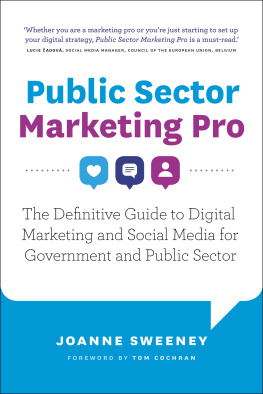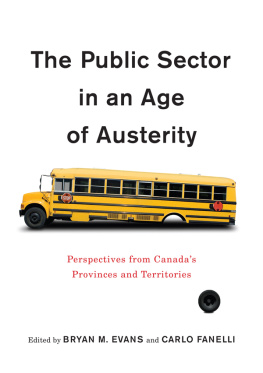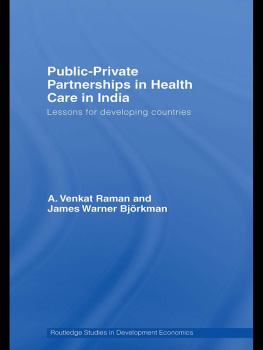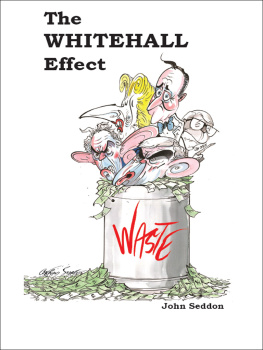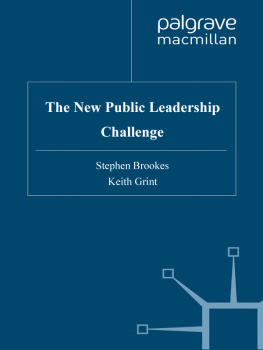The Myth of Measurement
Sage Swifts Series
The SAGE SWIFTS series showcases the best of social science research that has the potential to infl uence public policy and practice, resulting in positive social change. We strongly believe that the social sciences are uniquely positioned to make this impact and thus benefi t society in a myriad of ways.
SAGE SWIFTS celebrate and support the impact of quality empirical work that provides a provocative intervention into current debates, helping society to meet critical challenges going forward.
TITLES IN THE SERIES INCLUDE:
The Myth of Measurement
Inspection, Audit, Targets and the Public Sector

- Los Angeles
- London
- New Delhi
- Singapore
- Washington DC
- Melbourne
SAGE Publications Ltd
1 Olivers Yard
55 City Road
London EC1Y 1SP
SAGE Publications Inc.
2455 Teller Road
Thousand Oaks, California 91320
SAGE Publications India Pvt Ltd
B 1/I 1 Mohan Cooperative Industrial Area
Mathura Road
New Delhi 110 044
SAGE Publications Asia-Pacific Pte Ltd
3 Church Street
#10-04 Samsung Hub
Singapore 049483
Nick Frost 2021
Apart from any fair dealing for the purposes of research, private study, or criticism or review, as permitted under the Copyright, Designs and Patents Act, 1988, this publication may not be reproduced, stored or transmitted in any form, or by any means, without the prior permission in writing of the publisher, or in the case of reprographic reproduction, in accordance with the terms of licences issued by the Copyright Licensing Agency. Enquiries concerning reproduction outside those terms should be sent to the publisher.
Library of Congress Control Number: 2021938336
British Library Cataloguing in Publication data
A catalogue record for this book is available from the British Library
ISBN 978-1-5297-3266-5
eISBN 978-1-5297-6074-3
Editor: Kate Keers
Assistant editor: Catriona McMullen
Production editor: Manmeet Kaur Tura
Copyeditor: Gemma Marren
Proofreader: Derek Markham
Marketing manager: Camille Richmond
Cover design: Wendy Scott
Typeset by: C&M Digitals (P) Ltd, Chennai, India
Printed in the UK
At SAGE we take sustainability seriously. Most of our products are printed in the UK using responsibly sourced papers and boards. When we print overseas we ensure sustainable papers are used as measured by the PREPS grading system. We undertake an annual audit to monitor our sustainability.
About the Author
Nick Frostis Emeritus Professor of Social Work at Leeds Beckett University. He is formerly a social worker and adult educator. Nick has written or edited more than 20 books and has been involved in chairing a number of public and voluntary organisations. He is the author, most recently, of Safeguarding Children and Young People (Sage, 2021).
Authors Acknowledgements
I would most of all like to thank the public sector workers who struggle, often against the odds, to provide high quality services for their service users. I am grateful to those I interviewed about their experiences of inspections and audits. Many thanks to Nigel Parton and Richard Skues for their specialist advice. Thanks also are due to the excellent editorial team at SAGE.
Publishers Acknowledgements
The author and the publisher are grateful for permission to reproduce the following material in this book:
.
, excerpt from Vainikainen, M.P., Thuneberg, H., Marjanen, J., Hautamki, J., Kupiainen, S. and Hotulainen, R. (2017) How do Finns know? Educational monitoring without inspection and standard setting. In Blmeke, S. and Gustafsson, J.E. (eds), Standard Setting in Education: The Nordic Countries in an International Perspective. Cham: Springer, pp. 243259. Reprinted by permission of Springer Nature.
Introduction
The Mayor: I have called you together, gentlemen, to communicate to you a most unpleasant piece of news: an Inspector is coming to visit us Our visitor is pretty certain to want to inspect the charitable institutions under your supervision first of all, so take care that everything is as it should be: see that the nightcaps are clean and that the patients dont look like sweeps, as they do on an ordinary day.
Gogol, The Government Inspector first performed in Russia in 1843
A team of school inspectors smartly dressed and carrying their bags of laptops and papers walk up the path of an urban primary school. The school secretary, a local woman, is expecting the team, welcomes them and asks the team if they would take a seat whilst she finds the headteacher. The headteacher soon arrives and reaches out to shake the hand of the inspectors only to be told: we regret to inform you that the inspection has been discontinued, due to poor safeguarding practice. The headteacher is shocked and asks why? The Lead Inspector replies, because the school secretary failed to ask us for identification: the inspection team left. Urban myth? I thought so too until the episode was later verified by the local Director of Childrens Services.
These and other comparable narratives stimulated me to ask a series of questions about the role and function of inspection and audit regimes. Why did a range of professionals I know, across a variety of organisations, worry so much about the forthcoming inspection? Why did organisations and leaders I respected obtain so-called inadequate judgements? Why did my place of work, of which I had a very positive experience, regularly appear in the lower places of various league tables? Were the resources and effort dedicated to the inspection and measurement task justified?
The origins of this book, and my direct involvement as an object of inspection and audit, lay in these questions and observations. This book therefore aims to explore the background, development, techniques and the impact of such inspection and audit regimes in five areas of the public sector. Organisations explored here include: schools, universities, police forces, childrens services and health services: all are people-centred, human service organisations. They are in the main publicly funded and thus are subject to varying forms of political and public accountability. Accountability in the private sector is mainly to shareholders but also to regulatory bodies where there may be some resemblance to the issues raised here.
I draw on a number of sources: I have interviewed two senior professionals in each field, a total of ten semi-structured interviews. I have studied a number of key theoretical and research-based studies: these are outlined and analysed in . Further, I have read many of the relevant key performance indicators, league tables and inspection reports relevant to the organisations studied: material which will be drawn upon as the argument unfolds. I use audit culture as a form of shorthand for all forms of inspections, audits, league tables and measurement of public service organisations.



